Dead Hawk Marks
First West Nile Virus Appearance of 2015
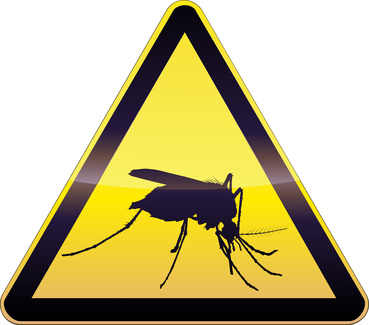
San Diego- A dead hawk found in Spring Valley has tested positive for West Nile virus, making it the first appearance of the potentially deadly disease in San Diego County in 2015.
San Diego County environmental health officials immediately reminded the public to protect themselves from mosquitoes that can transmit the disease, and to remember the County’s “Prevent, Protect, Report” motto.
“Everyone should remember to eliminate standing water inside and outside homes where mosquitoes could breed; wear ...
Continued

First detection of the Invasive Mosquitoes
in North County
Escondido - County environmental health officials have found evidence of the Aedes aegypti mosquito, an aggressive, day-feeding invasive mosquito that has the potential to carry serious diseases.
San Diego County vector control officials reported finding Aedes larvae in Escondido, after responding to a resident’s complaint. It’s the first detection of the insect in North County.
County officials again urged people to check inside and outside their homes, apartments and properties and to empty out any standing water where these small, black-with-white-striped mosquitoes can breed.
Continued

COMMUNITY ALERT .....
Beware of new invasive Aedes aegypti mosquito makes first 2015 appearance in San Diego County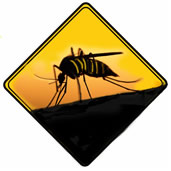
Chula Vista - County of San Diego environmental health officials have confirmed the discovery of another Aedes aegypti mosquito, a day-feeding invader that can carry serious diseases and was found here for the first time last year.
County of San Diego environmental health officials have confirmed the discovery of another Aedes aegypti mosquito, a day-feeding invader that can carry serious diseases and was found here for the first time last year.
County officials urged people to empty standing water inside and outside their homes to keep mosquitoes from breeding.
Continued
Let’s Be Prepared...
Even Before Mosquito Season!
San Diego - San Diego - We need to remember that mosquitoes are still with us even in Winter, and will share diseases with some of us this coming mosquito season! Eleven San Diego County residents contracted West Nile Virus last year — the most since 2008 — including a 78-year-old La Mesa man who became the first person locally to die from the disease in seven years.
The recent rainstorms marked the beginning of the rainy season, San Diego’s higher-than-normal Winter temperatures are creating perfect mosquito breeding conditions, and all they need is a ½ inch of standing water. Mosquitoes can breed anywhere! Rain water that might have collected in puddles, buckets, tires, plant saucers, rain ...
Continued
 
FIGHT THE BITE ~ LA LUCHA CONTRA LAS PICADURAS 2014
State Confirms La Mesa Man Died from West Nile Virus
San Diego - The cause of the recent death of a 78-year-old La Mesa man was confirmed as West Nile virus (WNV), the County Health and Human Services Agency (HHSA) announced on October 24, 2014.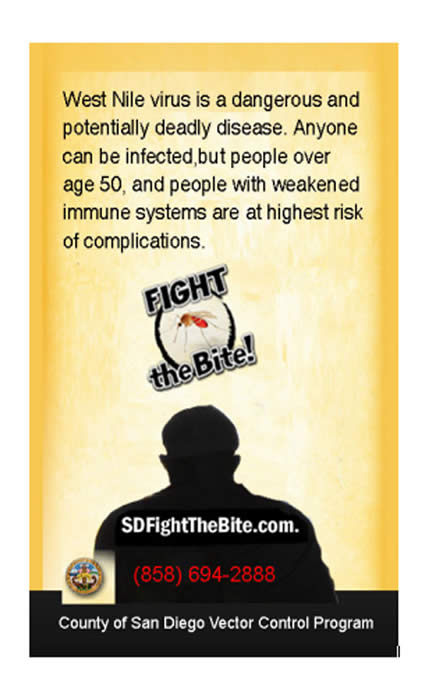 The man was admitted to a local hospital on October 6 after experiencing symptoms of encephalitis, an inflammation of the brain that can be caused by viral or bacterial infection. He died on October 10. Testing by the California Department of Public Health (CDPH) Viral and Rickettsial Disease Laboratory confirmed today that he had WNV. The man was admitted to a local hospital on October 6 after experiencing symptoms of encephalitis, an inflammation of the brain that can be caused by viral or bacterial infection. He died on October 10. Testing by the California Department of Public Health (CDPH) Viral and Rickettsial Disease Laboratory confirmed today that he had WNV.
This is the first death from WNV in San Diego County since 2007 and the seventh confirmed case this year. Three more individuals in San Diego with suspected WNV infections are currently under investigation. One person was a recent blood donor with no symptoms, and the other two have recovered from mild illnesses.
Only two human cases of WNV were reported in San Diego between 2009 and 2013, with both of those cases occurring in 2012. The highest number of cases occurred in 2008 when 36 were reported in San Diego.
“The calendar might say that we are past the peak West Nile virus season of August and September, but it is clear that this potentially deadly disease is still active in our community,” said Bruce Haynes, M.D., medical director of County Emergency Medical Services.
West Nile virus is carried by mosquitoes. The County Department of Environmental Health Vector Control conducted inspections in the vicinity of where the human cases were reported to check for potential areas of mosquito breeding. Vector Control also set up traps in those areas and sent notifications to residents.
Of those individuals who become infected with WNV, 80 percent will have no symptoms. Most of those who do get sick have mild symptoms of headache, fever, nausea, fatigue, skin rash or swollen glands. One in 150 of those infected with WNV will have serious neurologic complications that can be life threatening. The risk of complications increases for those over age 50 and people with weakened immune systems.
California is experiencing the highest numbers of WNV cases in nearly a decade. CDPH has reported 608 human cases so far this year, including 20 deaths. This is the highest number of cases since 2005 when 880 cases were reported. Orange County has seen 216 cases this year and Los Angeles County has had 159 cases.
Health officials urge the public to protect itself by practicing “Prevent, Protect, Report.”
Please report dead crows, ravens, jays, hawks and owls, and green pools to the Vector Control Program online or by using the “Fight the Bite” app.
For more information about West Nile virus, go to San Diego County’s “Fight the Bite” website:


Believe it or not, the mosquitoes are still out there, and still active
 On October 21, the calendar may say that fall has arrived, but warm and humid weather means San Diego County residents still need to remember to protect themselves from mosquitoes and the potentially deadly On October 21, the calendar may say that fall has arrived, but warm and humid weather means San Diego County residents still need to remember to protect themselves from mosquitoes and the potentially deadly 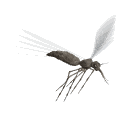 West Nile virus. West Nile virus.
“People need to remember to use insect repellents, wear long-sleeved shirts and pants if they’re out at dawn or dusk when mosquitoes are most active, and to clear their yards of standing water where mosquitoes can breed,” said San Diego County Department of Environmental Health Director Elizabeth Pozzebon.
So far this year, three San Diego County residents have been diagnosed with West Nile virus. Those numbers are very small
compared to other nearby counties. Orange County has seen 157 of California’s 428 total human cases of the disease this year; Los Angeles County has had 87 human cases. However, San Diego County’s three cases are its first local cases since 2012 and the most here since five people were diagnosed with the virus in 2009.
Officials from the County Vector Control Program — which protects people by monitoring and controlling “vectors,” pests like mosquitoes that can spread disease to people — said there are plenty of other signs that West Nile virus is active in the county and people should be careful.
So far during the summer, vector control recovered 21 dead birds that have tested positive for the virus — a number that ballooned from nine at the end of August — in addition to two positive mosquito batches.
Environmental Health and vector control officials have also responded to more than 1,204 neglected “green” swimming pools around the county this summer, spots that could have become breeding grounds for mosquitoes.
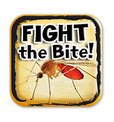 County officials urged people to remember their West Nile virus motto: “Prevent, Protect, Report.” They also reminded the public that they can keep up with West Nile virus activity and anonymously report dead birds and green swimming pools by downloading the County’s “Fight the Bite” phone app .www.sandiegocounty.gov County officials urged people to remember their West Nile virus motto: “Prevent, Protect, Report.” They also reminded the public that they can keep up with West Nile virus activity and anonymously report dead birds and green swimming pools by downloading the County’s “Fight the Bite” phone app .www.sandiegocounty.gov
Prevent Mosquito Breeding: Dump out or remove any backyard item that can hold water, such as plant saucers, rain gutters, buckets, garbage cans, toys, old tires, and wheelbarrows. Mosquito fish, available for free, may be used to control mosquito breeding in backyard water sources such as unused swimming pools, ponds, fountains and horse troughs.
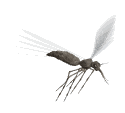 Protect Yourself from Mosquito Bites: Protect yourself from West Nile virus by staying inside when mosquitoes are most active, at dusk and dawn. Wear long sleeves and pants when outdoors. Use insect repellent containing DEET, picaridin, oil of lemon eucalyptus or IR3535 when outside. Make sure screens on windows and doors are in good condition and secured to keep insects out. Protect Yourself from Mosquito Bites: Protect yourself from West Nile virus by staying inside when mosquitoes are most active, at dusk and dawn. Wear long sleeves and pants when outdoors. Use insect repellent containing DEET, picaridin, oil of lemon eucalyptus or IR3535 when outside. Make sure screens on windows and doors are in good condition and secured to keep insects out.
Report Dead Birds and Green Swimming Pools: Report dead crows, ravens, jays, hawks and owls, and green swimming pools to the Vector Control Program at (858) 694-2888Call: (858) 694-2888 or vector@sdcounty.ca.gov. For more information about West Nile virus, go to San Diego County’s “Fight the Bite” website.


Hot weather increases mosquito activity and
the risk of disease from West Nile virus
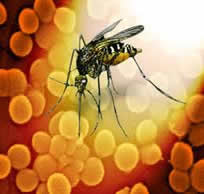
With the warm temperatures, adult mosquito populations have been increasing in recent weeks. Generally, West Nile Virus (WNV) outbreaks typically occur during the hot months of the year. The Culex mosquito that can transmit WNV is most prolific under these weather conditions. Therefore it is extremely important that residents eliminate stagnant water on their properties that may produce Culex mosquitoes.
West Nile virus is transmitted through the bite of a mosquito that has picked up the virus by feeding on an infected bird. Common West Nile virus symptoms include fever, nausea, headache and muscle aches. Symptoms may last from a few days to a few weeks.However, four out of five people infected with West Nile virus will not show any symptoms. In rare cases, severe illness including meningitis or encephalitis, or even death, can occur. People older than 50 are at higher risk for severe illness from West Nile Virus.
Report dead birds to local authorities. Dead birds may be a sign that West Nile virus is circulating between birds and the mosquitoes in an area. By reporting dead birds to state and local health departments, you can play an important role in 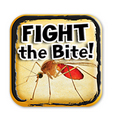 monitoring West Nile virus. State and local agencies have different policies for collecting and testing birds, so check with your state health department to find information about reporting dead birds in your area. monitoring West Nile virus. State and local agencies have different policies for collecting and testing birds, so check with your state health department to find information about reporting dead birds in your area.
San Diego County has been using helicopters, backpack blowers, mosquito-eating fish, public education, Internet notifications and more to protect the public. This year County officials launched a new smartphone application for the public to report pictures of possible signs of West Nile, such as dead birds and green swimming pools. Use this Fight the Bite! app to anonymously report green swimming pools, mosquito breeding and dead birds for treatment or testing.

San Diego County Resident with West Nile Virus Hospitalized
La Mesa man was recently hospitalized with West Nile virus and an El Cajon woman, who was treated as an outpatient, is listed as probably having the virus, the San Diego County Health and Human Services Agency (HHSA) reported.
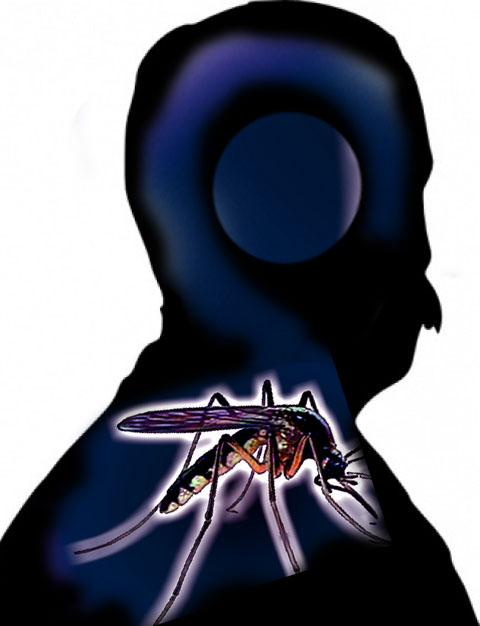 The 73-year-old man is currently recovering in a rehabilitation facility after being admitted for meningoencephalitis, an infection of the brain and surrounding tissue that can result from West Nile virus infection. The 44-year-old woman has recovered from her illness, which included flu-like symptoms with a rash. Both individuals reported having been bitten by mosquitoes near their homes before becoming ill. The 73-year-old man is currently recovering in a rehabilitation facility after being admitted for meningoencephalitis, an infection of the brain and surrounding tissue that can result from West Nile virus infection. The 44-year-old woman has recovered from her illness, which included flu-like symptoms with a rash. Both individuals reported having been bitten by mosquitoes near their homes before becoming ill.
“West Nile virus is a dangerous and potentially deadly disease,” said Wilma Wooten, M.D., M.P.H, County public health officer. “It’s important for the public to protect against West Nile virus by taking precautions, including avoiding outdoor activity at dawn and dusk, and using insect repellent with DEET, picaridin, or oil of lemon eucalyptus.”
Four out of five people who become infected with West Nile virus do not have symptoms. Most of those who become ill have a mild illness of headache, fever, nausea, fatigue, skin rash, or swollen glands. One in 150 of those infected with the virus will have serious neurologic complications that can be life threatening. The risk of complications increases for those over age 50, and people with weakened immune systems.
The County Department of Environmental Health (DEH) Vector Control is reporting that three birds tested positive for West Nile virus in the El Cajon area.
“Vector Control is doing extra trappings in the area and conducting inspections of all known sources for mosquito breeding,” said Environmental Health Director Elizabeth Pozzebon. “The majority of birds that tested positive for West Nile virus this year are from the El Cajon area. We will be sending notifications to residents in the vicinity where human cases have been reported.”

County oficials announced aerial larviciding
for mosquitoes on San Diego
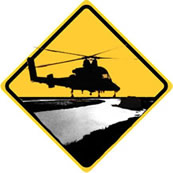
With the warm temperatures, adult mosquito populations have been increasing in recent weeks. Female mosquitoes can lay up to 200 eggs at a time in the still water found in wetlands. These eggs hatch into larvae which feed on organic material. Larvicides are made from bacteria that are specific to mosquito larvae and will not harm other wildlife. This results in the efficient elimination of larvae before they can develop into biting adults.
The County of San Diego Vector Control Program contractor applies mosquito larvicide by helicopter to wetlands in an effort to reduce mosquito populations and the risk of mosquito-borne diseases, including West Nile Virus (WNV).
Mosquito populations are monitored and tested for the presence of West Nile Virus and other mosquito-borne diseases throughout the county during the mosquito season. Controlling mosquito abundance is essential in preventing the spread of West Nile Virus and other mosquito-borne diseases.
San Diego County Vector Control Program has scheduled the next aerial application of mosquito larvicide for the 2014 mosquito season. The larvicide applications will be conducted at three week intervals or as needed throughout the county to effectively reduce the mosquito population.

First Local Human Case of West Nile Virus in 2014 Reported
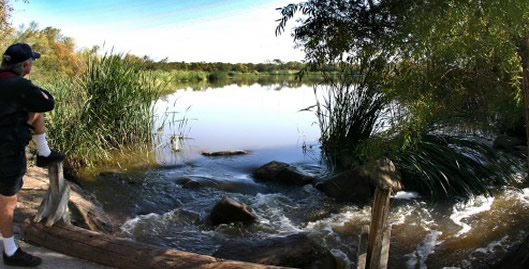
San Diego Oficials Reports First 2014 Human Case of Deadly Mosquito Virus Disease. A 43-year-old Santee man has the first confirmed local case of West Nile virus (WNV) in 2014, the County Health and Human Services Agency reported. The man had no symptoms, but the virus was detected during routine screening of blood he had donated earlier this month. The man did not recall any recent mosquito bites, but he had been camping outside the state the week before his blood was drawn.This is the first local human case since 2012.
The County’s Department of Environmental Health Vector Control Program is inspecting for potential mosquito breeding locations near the man’s home and setting up mosquito monitoring traps in the surrounding areas of Santee.
“Even though it’s most likely this individual acquired West Nile outside of the county, we know the virus is here in San Diego County,” said Wilma Wooten, M.D., M.P.H, County Public Health Officer. “Vector Control collected a dead crow reported by the public in the City of San Diego last week that has also tested positive for West Nile.
“It’s important for the public to know West Nile virus is a dangerous and potentially deadly disease.”

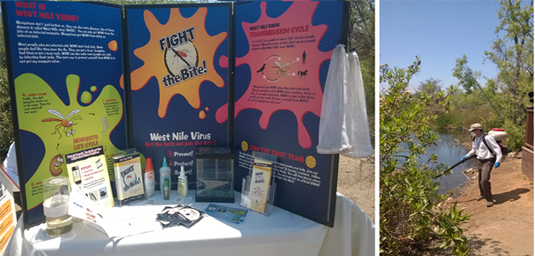
San Diego County has it's Kick Off for the
2014 West Nile Virus Prevention Campaign: Fight The Bite
Spring marks the beginning of the West Nile virus season in San Diego. County officials have launched a new smartphone application to help residents protect themselves.
As we near the warmer months, Vector Control officials with San Diego County say the risk of West Nile Virus is at its highest.
 San Diego County has been using helicopters, backpack blowers, mosquito-eating fish, public education, Internet notifications and more to protect the public. This year County officials are also launching a new smartphone application for the public to report pictures of possible signs of West Nile, such as dead birds and green swimming pools. San Diego County has been using helicopters, backpack blowers, mosquito-eating fish, public education, Internet notifications and more to protect the public. This year County officials are also launching a new smartphone application for the public to report pictures of possible signs of West Nile, such as dead birds and green swimming pools.
“So far, our efforts have paid off, said County Supervisor Greg Cox, “Last year, there wasn’t a single reported human case of West Nile virus in San Diego County. But as we all know, diseases can strike anywhere, anytime if we let down our guards, and County would continue to do its part.”

Aerial application of mosquito larvicide for the 2014

.....San Diego County Vector Control program will conduct the first aerial application of mosquito larvicide for the 2014 mosquito season. The larvicide applications will be conducted at various wetlands throughout the county.
.....The County of San Diego Vector Control Program contractor applies mosquito larvicide by helicopter to wetlands in an effort to reduce mosquito population and the risk of West Nile Virus (WNV). Female mosquitoes can lay up to 200 eggs at a time in the still water found in wetlands. These eggs hatch into larvae which feed on organic material. The mosquito larvicides are made from naturally occurring bacteria which target the mosquito larvae in the water. This results in the efficient reduction of larvae before they can develop into biting adults which can spread diseases such as West Nile Virus.
.....West Nile Virus is a mosquito transmitted disease that has its peak occurrence during the warm summer months. The symptoms of West Nile Virus include: headache, fever, nausea, fatigue, skin rash or swollen glands. About one in 150 people infected with WNV develop more severe symptoms, such as meningitis, encephalitis, or myelitis. If you think you have symptoms consistent with West Nile Virus, contact your healthcare provider.
• Remember: The best protection against this virus is to prevent mosquito breeding and mosquito bites. |
 
FIGHT THE BITE ~ LA LUCHA CONTRA LAS PICADURAS 2013
|
Dead Birds Show
West Nile Virus Season Not Over
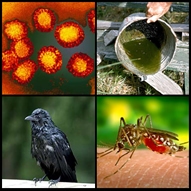
..... Two more dead birds have tested positive for West Nile virus, prompting County officials to remind people to protect themselves from mosquitoes that can carry the potentially-deadly disease even as -- fall -- seemed to be bringing cooler temperatures.
..... “We think of West Nile virus as a warm-weather disease and we are starting to see cooler days and nights, but finding these birds should remind everyone to be careful,” County Environmental Health Director Jack Miller said. “Fortunately, there are easy ways to protect yourself, such as wearing insect repellant and long-sleeved shirts and pants if you’re out at dusk when mosquitoes like to feed.”
| ...No people have been diagnosed with West Nile virus in San Diego County this year, but 339 people, including 11 who have died, have gotten sick across California in 2013. |
..... County vector-control personnel — who help protect the public from “vectors” such asmosquitoes that can transmit disease to humans — said a dead red-tailed hawk found in San Diego and a dead American crow found in Santee had tested positive for West Nile virus in the last week. Nine birds have tested positive this year.
..... West Nile virus is mainly a bird disease that can be spread to people when mosquitoes feed on the blood of an infected bird and then a person. Eight out 10 people who become infected with West Nile virus won’t suffer any symptoms at all. Most people who do get sick will suffer mild symptoms: headache, fever, nausea, fatigue, skin rash or swollen glands. However, in rare cases, people can suffer serious neurologic complications that can be life threatening. The risk of complications increases for those over age 50, and for people with weakened immune systems.
..... County officials said the public should remember the phrase, “Prevent, Protect, Report.”
Prevent mosquito breeding by dumping out or removing backyard water sources that can become breeding grounds for mosquitoes, such as: plant saucers, rain gutters, buckets, trash cans, children’s toys, old spare tires and wheelbarrows. Mosquito fish may be used to control mosquito breeding in backyard water sources such as unused swimming pools, ponds, fountains and horse troughs.
| Report dead birds and green, neglected swimming pools by calling County Vector Control at 858-694-2888. |
..... Protect yourself from mosquito bites by staying inside when mosquitoes are most active and by wearing long sleeves and pants when outdoors, especially at dawn or dusk. Use insect repellents containing DEET, Picaridin, Oil of Lemon Eucalyptus or IR 3535 when you are outdoors. Keep screens on doors and windows and make sure the screens are in good condition.
..... Miller said the County’s new free West Nile virus smartphone app makes it easier than ever to report neglected pools, mosquito breeding grounds or dead birds — and to get important updates about the disease.
..... Anyone with an iPhone, Android or Blackberry smartphone can submit anonymous reports to County Vector Control by using the app to snap a photo, type in the address and send it in.
The app is available on the County App Center, at http://www.sdcounty.ca.gov/appcenter/. Just look for the “Fight the Bite” logo.

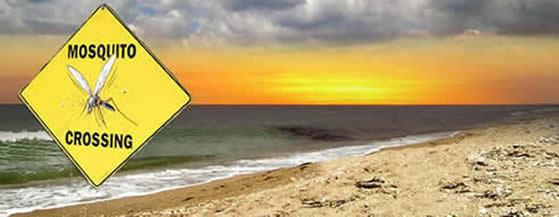
Tropical weather in San Diego could...
increase the mosquito population.
.....Mosquitoes lay their larva in a moist wet climate. On average, tropical systems can produce as little as one inch of rain to ten or more inches of rain. The more water, the greater chances for mosquitoes to enhance in population.
Mosquitoes can be breeding in your backyard! They breed in the big lakes and lagoons found around San Diego County, but they can also breed right in your own backyard. Mosquitoes can breed anywhere; all they need is a ½ inch of water. Check your yard for standing water. If you have any sources of standing water help your community by getting rid of them. Smaller sources such as pet water dishes or plant saucers can be dumped out. For the bigger backyard sources such as pools or ponds, make sure they are properly cleaned and maintained. If you suspect that a foreclosed or unattended property in your neighborhood is breeding mosquitoes in the backyard please contact the Vector Control Program.
Tropical systems have shown to have a drastic increase on the mosquito population which then can greater the chances of humans to catch West Nile Virus.
• Protect your family. Mosquito-Proof Your Home by installing or repairing screens on windows and doors to keep mosquitoes outside.Check your window and door screens to ensure they are in good repair and are keeping out the mosquitoes. Mosquitoes are small insects able to get through very tiny openings.
• Protect your community. Report dead birds and green pools to local authorities. Positive test for West NIle Virus in dead birds, and positive mosquitoes breeding in green pools confims that West Nile virus in an area. By reporting dead birds and pool with green water to state and local health departments, you can play an important role in monitoring West Nile virus and you may save lifes.
For more information about West Nile virus and how to protect yourself, call: (858) 694-2888 or visit:

Controlling mosquito abundance is essential in preventing the spread of West Nile virus and other mosquito-borne diseases.
.....The County of San Diego Vector Control Program contractor applies mosquito larvicide by helicopter to wetlands in an effort to reduce the mosquito population and the risk of West Nile virus. Female mosquitoes can lay up to 200 eggs at a time in the still water found in wetlands. These eggs hatch into larvae which feed on organic material. Larvicides are made from bacteria that are specific to mosquito larvae and will not harm other wildlife. This results in the efficient elimination of larvae before they can develop into biting adults which can spread diseases such as West Nile virus.
.....West Nile virus is a mosquito transmitted disease that has its peak occurrence during the warm summer months. The symptoms of West Nile virus include: headache, fever, nausea, fatigue, skin rash or swollen glands. About one in 150 people infected with West Nile virus develop more severe symptoms, such as meningitis, encephalitis, or myelitis. If you think you have symptoms consistent with West Nile virus, contact your healthcare provider.
Remember: the best protection against this virus is to prevent mosquito breeding and mosquito bites.
.....San Diego County Vector Control Program will conduct aerial applications of mosquito larvicide at various wetlands throughout the County on Wednesday, August 28, 2013. This will be the seventh aerial drop of mosquito larvicide for the 2013 mosquito breeding season. Additional applications may be conducted at three to four week intervals or as needed. Mosquito populations are monitored and tested for the presence of West Nile virus and other mosquito-borne diseases throughout the county before and during the mosquito season.

Mosquito populations have begun to rise with the warmer weather.
..... West Nile virus is a mosquito transmitted disease that has its peak occurrence during the warm summer months. Controlling mosquito abundance is essential in preventing the spread 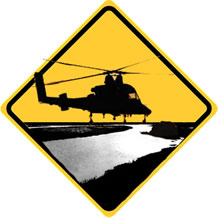 of West Nile virus and other mosquito-borne diseases. of West Nile virus and other mosquito-borne diseases.
San Diego County Vector Control Program conducted aerial applications of mosquito larvicide at various wetlands throughout the County.This was the fourth aerial drop of mosquito larvicide for the 2013 mosquito breeding season.
Mosquito populations are monitored and tested for the presence of West Nile virus and other mosquito-borne diseases throughout the county during the mosquito season.
The symptoms of West Nile virus include: headache, fever, nausea, fatigue, skin rash or swollen glands. About one in 150 people infected with West Nile virus develop more severe symptoms, such as meningitis, encephalitis, or myelitis. If you think you have symptoms consistent with West Nile virus, contact your healthcare provider.
Remember: the best protection against this virus is to prevent mosquito breeding and mosquito bites!

National Mosquito Control Awareness Week
......The week of June 23 – June 29, 2013 has been declared the seventeenth annual “National Mosquito Control Awareness Week” by the American Mosquito Control Association (AMCA). The AMCA, an international organization of nearly 2,000 public health professionals, has been dedicated to preserving the public’s health and well-being through safe, environmentally sound mosquito control programs since 1935.
During “Mosquito Week” the AMCA’s goal is to educate the general public about the significance of mosquitoes in their daily lives and the important service provided by mosquito control workers throughout the United States and worldwide.

...First human death from West Nile virus in California
....Last year, California saw 479 human West Nile virus cases, with 20 deaths. The California Department of Public Health has announced that a Sacramento County male has become the first human in the state to die from the West Nile virus this year. His illness, as well as his laboratory test results, are potentially consistent with West Nile neuroinvasive disease. Details about the man were not released because of health privacy laws.
Other counties – Merced, Los Angeles, Fresno, Orange, Ventura and Yuba – already had reported the presence of the virus in a total of 10 dead birds.
"Finding the first positive birds is always significant because it provides an early warning sign...
Continued

...Aerial applications of mosquito larvicide throughout the county
...The County of San Diego Vector Control Program contractor applies mosquito larvicide by helicopter to wetlands in an effort to reduce the mosquito population and 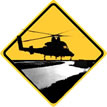 the risk of West Nile virus. the risk of West Nile virus.
...Female mosquitoes can lay up to 200 eggs at a time in the still water found in wetlands. These eggs hatch into larvae which feed on organic material. Larvicides are made from bacteria that are specific to mosquito larvae and will not harm other wildlife. This results...
Continued


County Kick Off 2013 West Nile Virus Prevention Campaign
....County Board of Supervisors Chairman Greg Cox, Chris Conlan Supervising Vector Ecologist at County of San Diego , and Deputy Public Health Officer Dr. Eric McDonald, kicked off the County’s 2013 West Nile virus prevention campaign by reminding people how they can protect themselves from the potentially-deadly disease.
...Last year marked one of the worst on record for West Nile virus both in California and across the Country — but not here, where the County of San Diego has taken strong steps to control mosquitoes that spread the disease and strongly encouraged the public to join the fight by using the County’s “Protect, Prevent, Report” campaign cry.
...Cox, McDonald and County environmental health officials held a press conference at Hollister Pond in Chula Vista, one of more than 200 waterways that the County routinely treats with granular larvicide dropped by helicopters to kill mosquito larvae during West Nile virus season.
Continued



Dead Crow Tests Positive For West Nile Virus
.LA JOLLA October 30,12- A dead American crow found in La Jolla has tested positive for West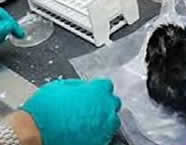 Nile virus, San Diego County vector control officials said Tuesday. Nile virus, San Diego County vector control officials said Tuesday.
Although summer-like temperatures have been dropping and San Diego County’s warm-weather West Nile virus season seems to be ending, County environmental health officials urged people to be careful and protect themselves from mosquitoes that can spread the potentially-deadly disease.
“This is a good reminder that West Nile virus is here, but that it can be prevented” said Jack Miller, Director of the County Department of Environmental Health. ”We want to remind people that they can take some simple steps to protect themselves.”
Miller said residents should remember the phrase “Protect, Prevent, Report.”

Fourth death attributed to the West Nile Virus in California
....Health officials said on Thursday September 6th, 2012 that a Merced County elderly woman 86-year-old died after becoming infected with West Nile virus in August. California health officials say dozens of other people have been infected with the virus, but have survived. There have been three other West Nile virus-related deaths in the state in 2012. An 72-year-old Fresno County elderly woman who was hospitalized for the virus and later died, an 88-year-old Kern County woman and an 85-year-old Sacramento County man.
...“All residents, especially those over 50 years of age and those with chronic health conditions, must take this disease seriously and should take every precaution to protect themselves and their families from mosquito bites,” said Dr. Edward L. Moreno, director and health officer for the Fresno County Department of Public Health. “I also encourage residents to engage the services of their mosquito abatement district, if necessary, to eliminate possible mosquito-breeding sources around their homes.”

....Public is Urged to Prevent, Protect and Report
....Mosquitoes are small and most often seen as little more than a nuisance – but they are much more dangerous than that. West Nile virus (WNV), a disease transmitted through bites from infected mosquitoes, caused the death of nine Californians in 2011 alone, more than any other state in the U.S. It is the most prevalent mosquito-borne disease in the country. There were a total of 712 cases and 43 deaths nationwide last year.
There is no cure or vaccine for WNV. Symptoms of WNV typically develop within three to 14 days of a bite from an infected mosquito. The vast majority of human cases exhibit little to no symptoms of the disease – only 20 percent of those who contract the virus show flu-like symptoms such as fever, fatigue and muscle soreness. However, for individuals with weak immune systems, particularly the young and elderly, the disease can trigger life-threatening conditions such as encephalitis (the inflammation of the brain), which causes high fever, disorientation, convulsions and even death.
Risk of WNV contraction is highest during dawn to dusk; therefore, precautions should be taken to avoid mosquito bites if you spend extended periods of time outside.

....New Threat!
....The Asian tiger mosquito was recently identified in an El Monte neighborhood. This 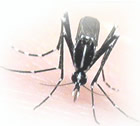 aggressive day-biting mosquito is not native to California and has not been seen in the San Gabriel Valley since 2001, when they were accidentally imported in shipments of “Lucky Bamboo” plants. aggressive day-biting mosquito is not native to California and has not been seen in the San Gabriel Valley since 2001, when they were accidentally imported in shipments of “Lucky Bamboo” plants.
...This mosquito is very small (approx. ¼ inch), with distinctive black and white bands on its thorax, abdomen, and legs. They are aggressive biters and are active during daylight hours as well as dusk and dawn.This mosquito is a container breeder and prefers to lay its eggs onto the inside of water-filled containers or on stems of aquatic plants. When..
Continued →

....West Nile Virus is in San Diego!
....West Nile Virus (WNV) has been spreading rapidly across the United States.The Center for Disease Control and Prevention (CDC) is warning the public to take steps to protect themselves. Meanwhile, California announced the first reported fatality from West Nile virus, health officials in San Diego County confirmed the first human case. A 19 year-old Escondido man who didn't report any symptoms; however, the virus was detected during a routine screening test of blood he donated in late July. The man did not recall any mosquito bites in the 30 days prior to donating blood and said he did not travel out of the county during this period.
HHSA and the County’s Department of Environmental Health Vector Control are inspecting the man’s home and surrounding areas for potential mosquito breeding locations, and setting up traps.....
Continued →

....Mosquitoes Continue to Threaten California!!!
.... A dramatic upswing in West Nile virus human cases is reported nationwide. More serious
|
"We're in the midst of one of the largest West Nile virus outbreaks ever seen in the United States," said Dr. Lyle Petersen, director of the division of vector-borne infectious diseases for the CDC." |
illnesses from West Nile virus have been reported this year. The increased cases we are seeing are a strong reminder that West Nile Virus is a serious disease, and a confirmation of how bad it can be. West Nile Virus is severe, and can potentially be fatal to the most vulnerable in our population. The Health Department is warning residents of how dangerous it is, and urging all to take the necessary precautions.
The first human case and the first death in California... Continued →

Aerial applications of mosquito larvicide throughout the county
 ...The County of San Diego Vector Control Program contractor applies mosquito larvicide by helicopter to wetlands in an effort to reduce mosquito populations and the risk of mosquito-borne diseases including West Nile Virus (WNV). Female mosquitoes can lay up to 200 eggs at a time in the still water found in wetlands. These eggs hatch into larvae which feed on organic material. Larvicides are made from bacteria that are specific to mosquito larvae and will not harm other wildlife. This results in the efficient elimination of larvae before they can develop into biting adults. ...The County of San Diego Vector Control Program contractor applies mosquito larvicide by helicopter to wetlands in an effort to reduce mosquito populations and the risk of mosquito-borne diseases including West Nile Virus (WNV). Female mosquitoes can lay up to 200 eggs at a time in the still water found in wetlands. These eggs hatch into larvae which feed on organic material. Larvicides are made from bacteria that are specific to mosquito larvae and will not harm other wildlife. This results in the efficient elimination of larvae before they can develop into biting adults.
...This will be the fourth aerial drop of mosquito larvicide for the 2012 mosquito breeding season. Mosquito populations... Continued →
....

....National Mosquito Control Awareness Week
.... Each year the National Mosquito Control Awareness Week is declared by the American Mosquito Control Association to educate the general public about the significance of mosquitoes in their daily lives and the important service provided by mosquito vector control workers throughout the United States and worldwide.
The National Mosquito Control Awareness Week" (June 24 – 30), brings heightened attention on how to be safe from the mosquitos and aware about the health risks. It's an excellent opportunity to provide people information on the mosquito life cycle and how...
... Continued →

....It’s Mosquito Season Again!
.... Warmer temperatures and the end of the Spring showers might left more than the blooming of flowers and aromatic herbs in our gardens and balconies. It might also cause standing water where mosquitoes can breed, growth and bite!
...The last week of April was declared: “West Nile virus and Mosquito & Vector Control Awareness Week” by the California legislators as the kicks off mosquito and West Nile virus season, as well as the start of a public information and education campaign to keep residents safe and aware about the health risks associated with mosquitoes.
It's Mosquito Season Again! Continued →


The battle against the West Nile Virus has begun
.... The 2011version of the battle against West Nile Virus has officially began. The first helicopter larvae site drop of the season. Was at Fenton Pond in Chula Vista. The mixture kills mosquito larvae, from mosquitoes carrying West Nile Virus. These mosquitoes become more active with the warm weather.
....“This disease has been spreading through the country in the last decade and has been in San Diego for a few years now. We had 37 cases in 2008 and in 2010 it dropped to zero,” said Eric McDonald,M.D. San Diego County Deputy Public Health Officer.
Continued →

Vector Control Goes Hi-Tech to Fight the Bite!
.... It’s West Nile virus season again; are you prepared to Fight the Bite? West Nile virus (WNV) is a disease that is transmitted to people through the bite of infected mosquitoes. Mosquitoes get the virus when they feed on infected birds.
....West Nile virus affects people of all ages and ethnic backgrounds. The elderly, children and people whose immune systems are compromised are at the highest risk of developing serious illness such as meningitis and encephalitis. Neurological effects of the virus such as paralysis and weakness can be permanent. West Nile virus can also be fatal and there is no vaccine or cure.
Vector Control Goes High-tech → Continue reading on PDF

Bill's Fight for His Life
.... Being a County of San Diego Public Information Officer, Bill Polick knew a lot about West Nile virus (WNV) --- but he never thought he would become part of the West Nile “story.” Today he hopes by sharing his story he will help others avoid getting sick. Polick knew about West Nile virus long before most county residents. He Bill does not remember being bitten by a mosquito. He does remember “waking up on Monday morning with a rash” from his neck to his feet. He immediately went to see his doctor who sent him to the lab for some blood work to try to determine the cause of the rash. By this point, the virus was attacking Bill’s brain. He has “no memory of going to the lab or driving back to work.” West Nile virus (WNV) --- but he never thought he would become part of the West Nile “story.” Today he hopes by sharing his story he will help others avoid getting sick. Polick knew about West Nile virus long before most county residents. He Bill does not remember being bitten by a mosquito. He does remember “waking up on Monday morning with a rash” from his neck to his feet. He immediately went to see his doctor who sent him to the lab for some blood work to try to determine the cause of the rash. By this point, the virus was attacking Bill’s brain. He has “no memory of going to the lab or driving back to work.”
.... Bill’s Fight for Life Accelerating Effects Five Easy Ways to Fight the Bite was present at the County’s 2001 news conference that exposed the threat WNV poses to San Diego residents, two full years before the virus was even confirmed to be in San Diego County. But, in September 2008, Bill fell victim to the virus. WNV is a potentially life-threatening disease carried by birds. Mosquitoes transmit the virus from infected birds to people and horses. The virus often goes undiagnosed as many people who contract the virus show no symptoms. Others get mild symptoms ranging from headaches to muscle stiffness, rash, fever and nausea. These symptoms are often mistaken for the flu.
Bill's Fight for His Life → Continue reading on PDF

Amazing Grace
.... What you don’t know can hurt you! Just ask Grace Oberst, a San Diego County  resident, who contracted West Nile Virus in September 2007, at the age of 67. Though Grace was aware that the virus is present in San Diego County, she didn’t know how hard the virus could hit. She didn’t know how to protect herself from the virus and the mosquitoes that transmit the disease from infected birds to people. And she didn’t know about the symptoms associated with the virus. Like a lot of people, she “didn’t think it would ever happen to me.” resident, who contracted West Nile Virus in September 2007, at the age of 67. Though Grace was aware that the virus is present in San Diego County, she didn’t know how hard the virus could hit. She didn’t know how to protect herself from the virus and the mosquitoes that transmit the disease from infected birds to people. And she didn’t know about the symptoms associated with the virus. Like a lot of people, she “didn’t think it would ever happen to me.”
West Nile Virus can be difficult to diagnose as it can produce a wide variety of symptoms. Most people that contract the disease don’t develop any symptoms at all, while others...
Continued →
|